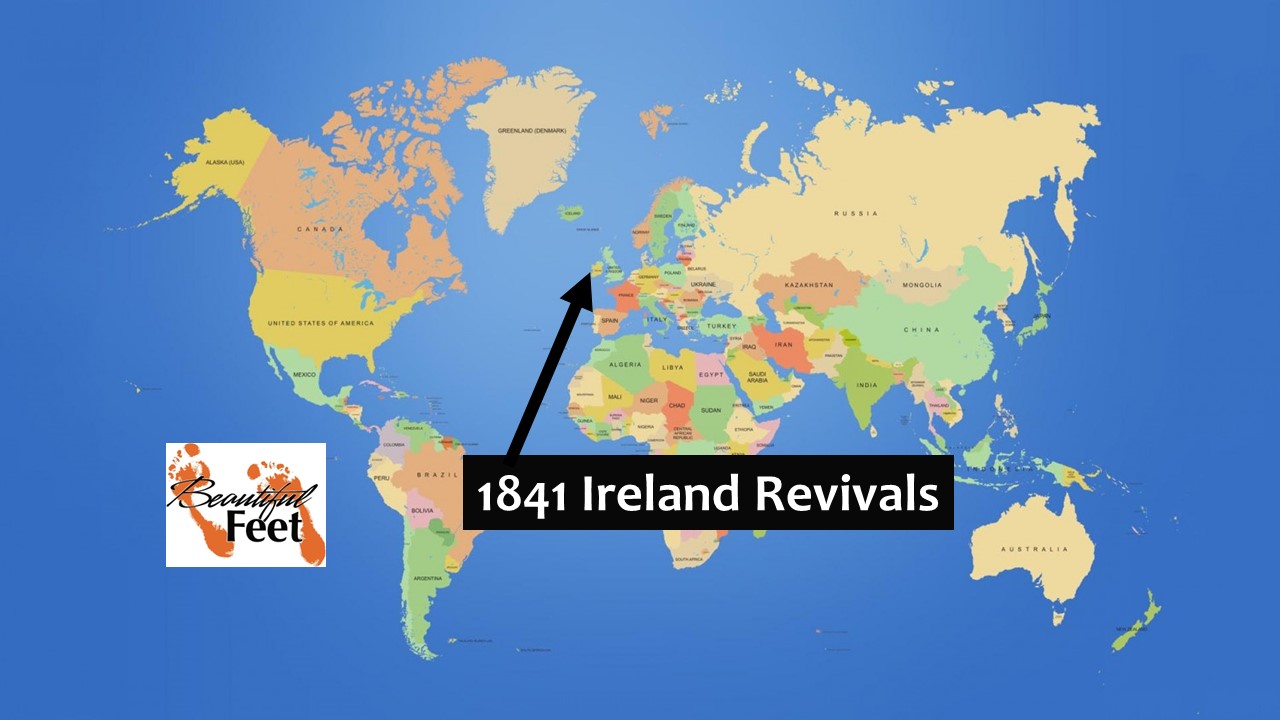
Background to the Ministry of James Caughey
Before delving into the Ireland revival account with the American Methodist evangelist James Caughey, we highly recommend reading a previous post titled “1827-1841 New York & Canada Revivals.” That post provides essential background information on Caughey, detailing how he initially commenced his ministry. It also sheds light on the divine guidance that led him to Ireland and Great Britain. Familiarizing yourself with this context will enhance your understanding and appreciation of the impactful ministry that follows in Ireland.
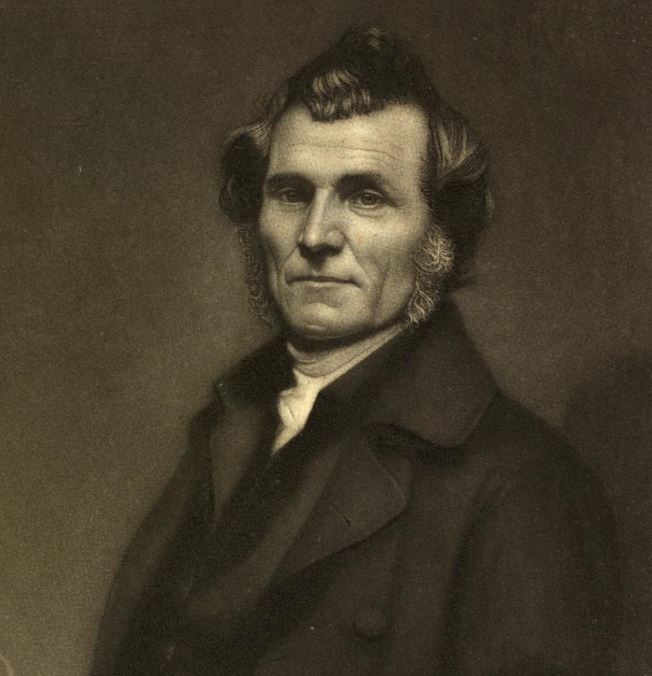
Evangelist James Caughey
Following a successful ministry tour through Canada, Caughey embarked on his voyage across the Atlantic from Halifax, Nova Scotia, Canada. This extraordinary crossing shattered all previous records, as the ship reached its destination in Liverpool, England, in just under 10 days, on July 29, 1841.
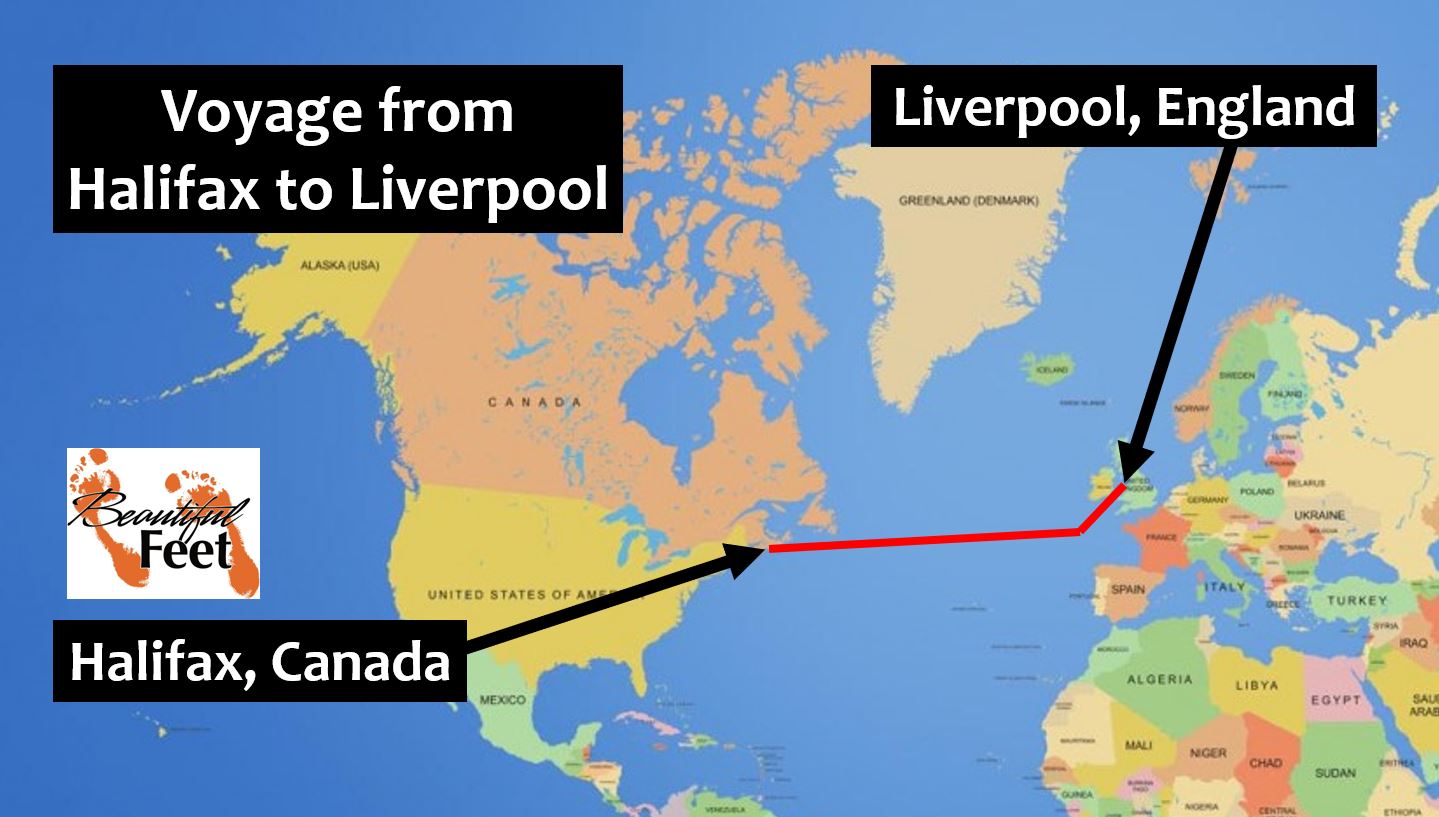
Arrival in Liverpool, England
Upon arriving in Liverpool, Caughey found himself in an unfamiliar land, not knowing a single soul in the city, and without any prior invitation from a church in Great Britain. However, fueled by faith and confidence in God’s guidance, he stepped ashore, trusting that the path would unfold before him as he continued in obedience to what he had been called to do.
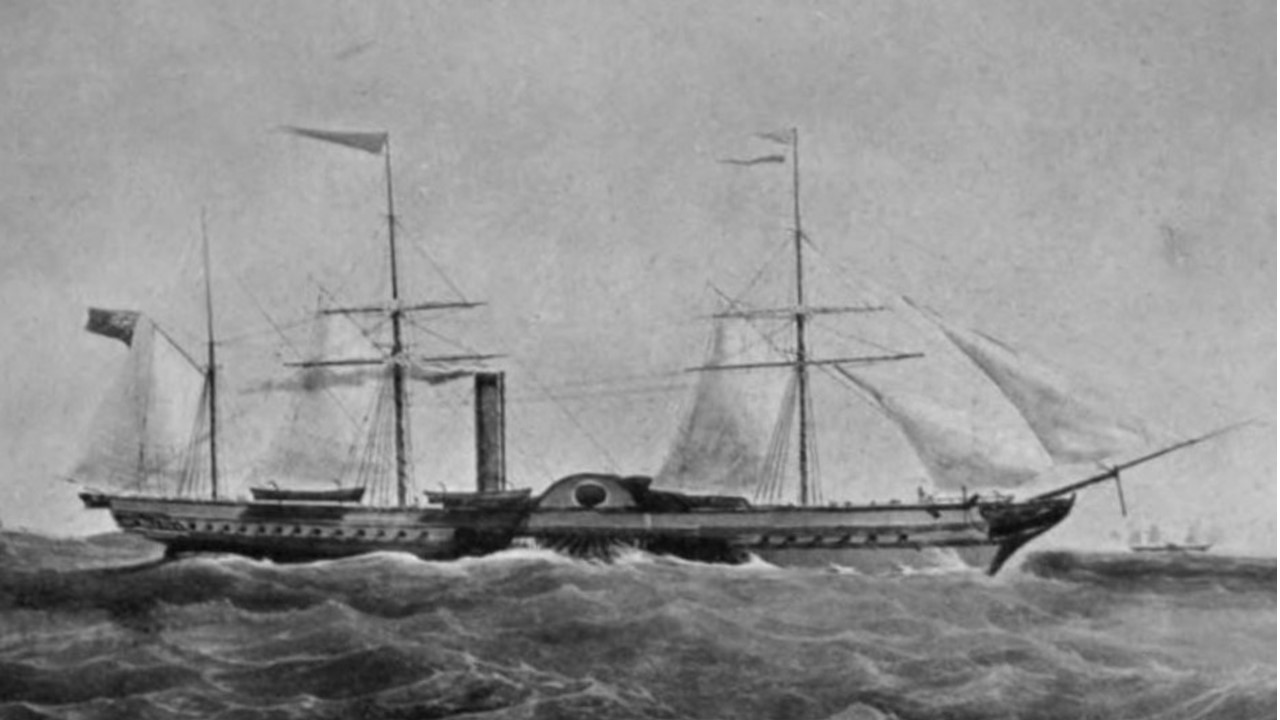
Steamboat Britannia, the one Caughey traveled on to Liverpool, England in 1841
Methodist Conference in Manchester
Upon hearing of the Methodist Conference taking place in Manchester, Caughey set out to attend that event. During his time there, he had the opportunity to forge new connections. Among them were two Irish Methodist ministers, one of whom was Thomas Waugh, the Superintendent of the Methodist churches around Dublin, Ireland.
Caughey presented them with a letter of recommendation penned by his bishop in the United States. In return, Thomas Waugh graciously provided Caughey with a letter of introduction that would serve as a key to open doors for him in the Methodist churches in the Dublin area. This exchange marked a crucial turning point in Caughey’s ministry as he prepared to impact the spiritual landscape of Ireland.
Returning to Liverpool after the conference, Caughey strongly sensed God’s leading to Dublin. Fueled by this conviction, he promptly boarded a ship departing from Liverpool, sailing across the channel towards his new destination.
Upon reaching Dublin, he wasted no time and sought out the pastor of the local Methodist church. With the letter of introduction, thoughtfully provided by Thomas Waugh during the Manchester Conference, he presented himself to the pastor. The warm reception he received was beyond his expectations, and to his delight, he was even invited to preach the following Sunday morning at the Hendrick Street Chapel. This invitation marked the beginning of his influential ministry in Dublin, where he would go on to touch the lives of countless individuals.
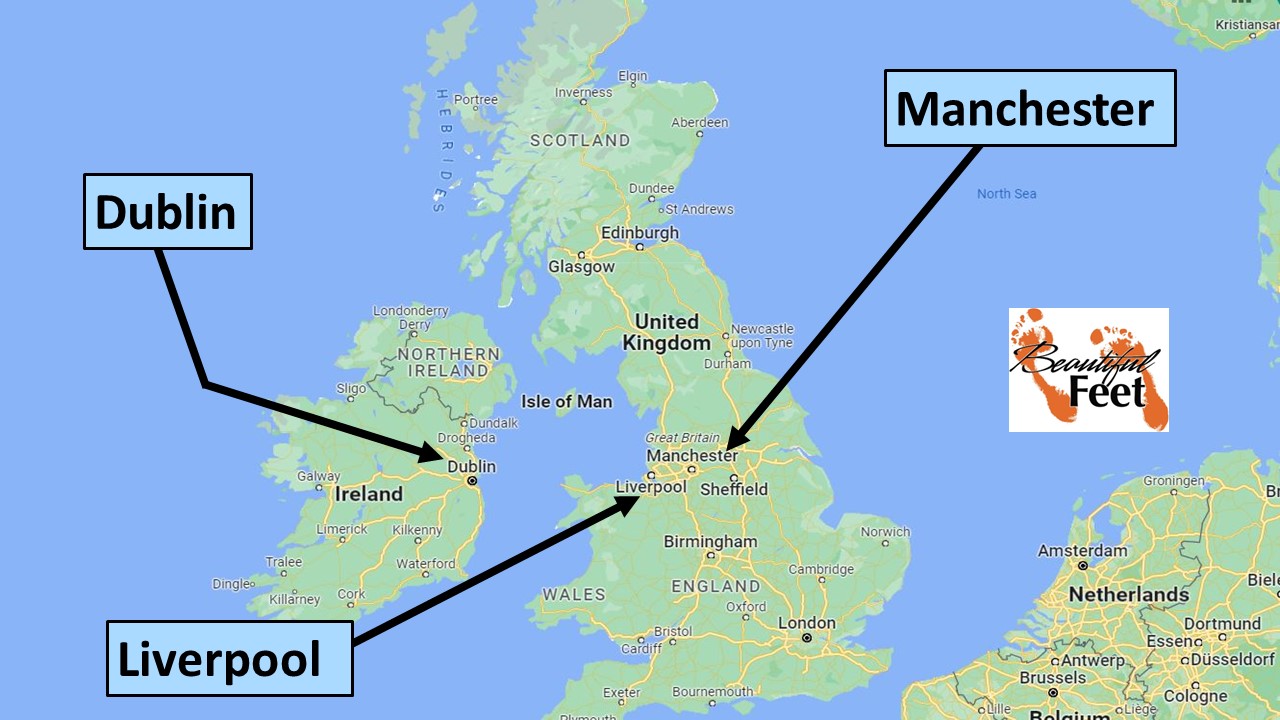
Hendrick Street Chapel—Dublin, Ireland
On Sunday, August 8, 1841, Caughey delivered his first sermon, and from that sermon:
A gracious influence rested on the whole congregation.
After the sermon, Caughey quietly retreated to his hotel, unaware of the stir he had created among the people. They were left with burning questions:
Who is he?
What is his name?
Who sent him here?
This stranger should be invited to preach again tonight.
After his impactful sermon during the morning service, Caughey was earnestly requested to preach again that evening, which he did. Following the evening service, Caughey was then asked to hold services nightly, in an effort to spark a revival among the people.
Results at Dublin’s Hendrick Street Chapel
Within the span of the first week, an extraordinary revival movement had taken hold, and each passing day witnessed people embracing Christ as their Savior. The impact of Caughey’s ministry was profound, and by the end of four weeks at this chapel, an astounding 130 individuals had professed their faith in Christ.
Following one of the sermons at this location, Caughey wrote of a unique experience:
That none of us ever had before, nor may ever have again, ‘till mortality is swallowed up in life’.
Suddenly, like a burst of sunshine on a summer’s afternoon, when the rains have ceased, an influence, evidently from God, came down upon the people. The Lord seemed to open heaven to the view of his saints; at least, the veil became so transparent that hundreds felt, during thirty or forty minutes, as if they were surrounded with the glories of the celestial world. The church militant and the church triumphant appeared to unite in a manner it is not possible to describe. I cannot, I dare not attempt it, not even the language given me in that hour.
The Revival Filled the City and Beyond
The impact of the revival extended far and wide, encompassing not only the Hendrick Street Chapel but also reaching the other two large Methodist chapels in Dublin, as well as the smaller ones in the vicinity.
Conclusion to Caughey’s Ministry in Dublin, Ireland
On the night of Thursday, January 6, 1842, Caughey delivered his final sermon in Dublin at the Abbey Street Chapel, a building with the capacity to accommodate over 2,000 people. The chapel was filled to the brim, resonating with the spiritual fervor that had been ignited during Caughey’s impactful ministry.
Thronged by Crowds upon Departure
The people were so filled with gratitude for Caughey’s ministry that they all wanted to shake his hand prior to him leaving. The crowd pressing on him was overwhelming, as Caughey relates:
I was hemmed in on every side. At last two or three brethren, in mercy, undertook to set me free, and they had a task. With much trouble they opened a small path, and through a forest of hands, I gained the street; when, lo! it was lined to my home… The door was surrounded with people, but some friends succeeded in pulling me into the house; but, even here, there was little relief, as many were inside.
Extraordinary Prayer Preceded Extraordinary Results
Most of Caughey’s time during those five months in Dublin, from breakfast until dinner, was dedicated to prayer with his Bible open before him, seeking God for wisdom and His blessings on what he was to preach.
Results of the Dublin Revival
► After preaching 129 sermons, the number of those converted to Christ was about 700.
► Caughey’s prophecy of an imminent death, and his prayer for that unknown man at that time, brought the individual to Christ soon before he passed away.
► Because of the increase in donations following the revival, the Dublin Methodist churches, who had only been supporting three preachers, increased the number of full time ministers to six.
► It was noted that the revival was not the “effect of mere animal excitement or fanaticism,” but was a genuine work of the God.
No Strategic Planning
A significant difference in James Caughey’s ministry from that of other evangelists and revivalists was that he didn’t have a strategic plan in place to guide his decisions and travels. This isn’t meant to criticize such planning; it merely indicates that Caughey walked by faith, often uncertain about his next steps. For example:
► Upon his initial entry into Great Britain, arriving in Liverpool on July 29, 1841, Caughey had no connections and was uncertain where to begin his work.
► Learning about a Methodist Conference in Manchester, England, he decided to attend and make new connections.
► In Manchester, he formed acquaintances with Irish ministers, and upon receiving an invitation, he ventured to Dublin, Ireland.
► Upon his arrival in Dublin, he established a connection with a local minister who invited him to preach.
► The congregation’s positive response to his first sermon led to an invitation for him to preach again on that same first Sunday night.
► Impressed by his preaching, they invited him to stay and hold services throughout the week.
► The revival took root and continued for an impressive five months, witnessing souls continually being saved .
► His reputation spread, and he received an invitation to preach in Limerick, where he stayed for ten weeks, further impacting lives through his ministry.
That was typical of his ministry as he traveled through Ireland and England from 1841 to 1847.
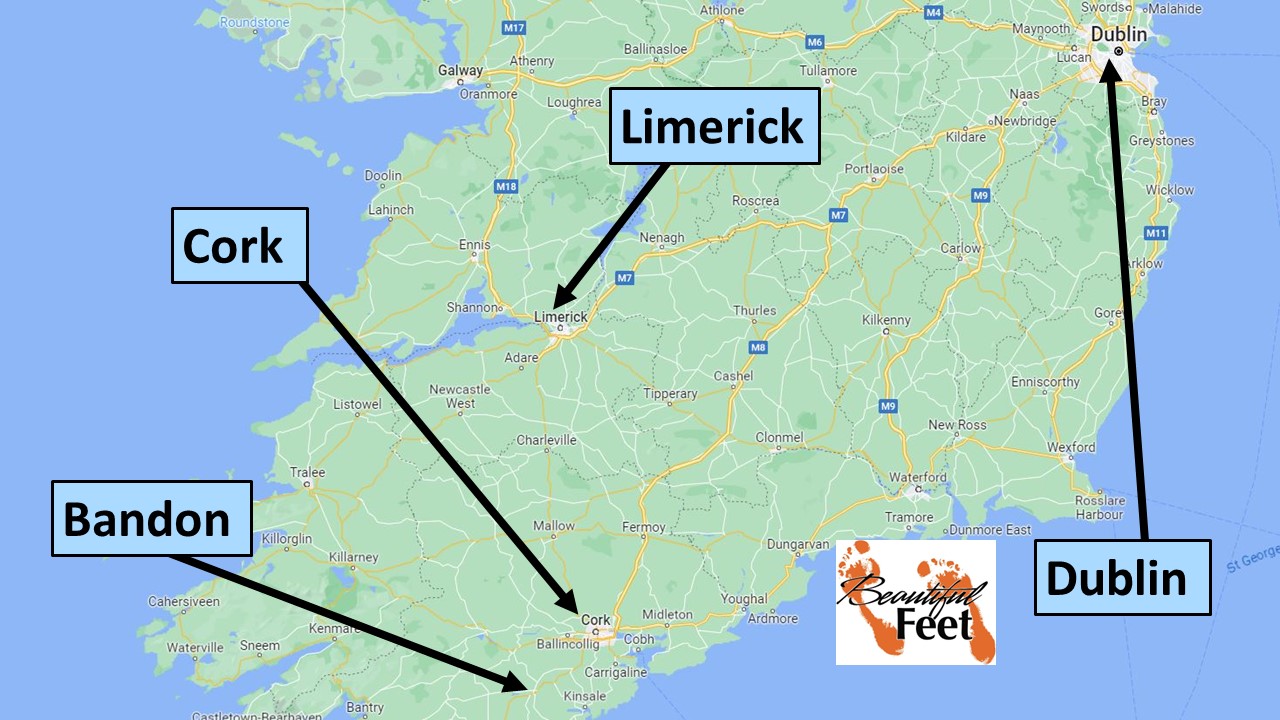
Locations in Ireland where revivals occurred
Revival in Limerick, Ireland
Caughey’s approach to the conversion of souls went beyond prayer and preaching alone. Together with the minister of the Limerick Wesley Chapel, he engaged in continuous house visits, praying with families, following up on new converts, and “exhorting sinners to turn to God.”
Their dedicated efforts and diligent labor bore remarkable fruit, with the Lord graciously converting souls on a daily basis.
Demon Possession in Limerick
During one of the powerful services in Limerick, Caughey recounted a remarkable incident involving a woman who was demon-possessed. In the charged atmosphere common in revivals, such occurrences are not uncommon. Here is a brief excerpt from Caughey’s own account of the event:
A woman… sprang upon her feet, began to jump up and down, howling in a most horrible manner; her head at the same time flying from side to side, as if it would leave her body. Some fled in horror; others fainted; many stood in solemn awe before God. It was a terrible conflict. I had seen such things before, but the dear people were appalled. It seemed as if two contending powers were rending her in pieces. I believe the devil was then making his last effort to keep possession of her soul; nor can I doubt that the Holy Ghost was then in the act of casting him out. The devil ’rent her sore’ and departed. Mark ix. 26. I saw her in the congregation a few nights afterwards, ‘Clothed, and in her right mind,’ as peaceful as a lamb, and happy in God.
Results in Limerick
► There were 130 individuals who experienced conversion during the revival.
► Churches of other denominations also reaped significant benefits, as many new converts joined their congregations.
Departure from Limerick
Concluding his impactful 10-week stay in Limerick, Caughey left that city on March 18, 1842, traveling by stagecoach to the town of Cork to begin his ministry efforts there.
Revival in Cork, Ireland
Caughey’s ministry in Cork began on March 20, 1842, and in that town there were similarities as to what was witnessed in Limerick and Dublin. The following is Caughey’s testimony of the Cork Revival:
I cannot express the sensations which have swept over my soul in beholding the large communion filled every night with seekers of salvation. Their tears and sobs, and subdued cries for mercy, have been sometimes profoundly awful. You will, no doubt, be anxious to know the number of these trophies of Divine Love. I cannot state precisely the number of persons converted to God. We had a meeting for this purpose three weeks ago, and nearly two hundred of them present; there were many others, but they were unable to attend that particular meeting, and we have not had a similar one since. The work is still advancing with increasing power.
Note the efforts in follow-up of new converts, and the placement of them in small groups:
We had those who have been lately born of the Spirit seated by themselves in the centre seats of the chapel. After a solemn and pointed address, in which their duties, responsibilities, and dangers, were faithfully urged upon their attention, they were called forward to the communion rails. Several important questions were then proposed to them; their names, places of residence, and the leader of their choice, were carefully taken. They then knelt down, and were commended in prayer to the guidance and protection of the Almighty. The congregation, admitted by ticket, then arose, while the young converts remained kneeling…
Results of the Cork Revival
► There were well over 200 new converts.
► A “Young Men’s Total Abstinence Society” was formed.
► There was a remarkable account of restitution for embezzlement.
Departure from Cork for Bandon
Caughey invested 4 months in Cork, departing on Saturday, July 30, 1842, for Bandon, Ireland.
Ministry in Bandon, Ireland
On Sunday, July 31, 1842, Caughey began his revival work in Bandon, preaching twice on Sundays and 4 nights during the week.
The congregation in Bandon warmly welcomed his ministry and displayed great receptivity. However, the community members, though civil, showed no interest in the church’s proceedings. As a result, Bandon proved to be one of the most challenging places he had ever ministered, leaving him feeling deeply discouraged. Nevertheless, amidst the labor and difficulties, there were moments when he found solace in the rewards of his faithfulness. One particular Sunday, after approximately two months of ministry, he penned the following account:
Last Sabbath, however, was a glorious day to many. We had a select meeting for the young converts in the afternoon, and forty-four persons came forward and testified, that, during the last four weeks, God, for Christ’s sake, had forgiven their sins. It was indeed a powerful and melting time. I have witnessed nothing like it since the commencement of the special services. Many of the old members were bathed in tears, and toward the close of the service, a large number of awakened sinners approached the communion rail, and knelt to be prayed for. Their cries for mercy were piercing.
He continues with his report of gratitude and thanksgiving:
This happy hour amply repaid me for all my tears, and groans, and labors, during these last nine weeks. The Lord saw that I needed such a manifestation of his power, for my soul was greatly discouraged.
Departure from Bandon
On Saturday, October 22, 1842, having spent nearly three months in Bandon, Caughey journeyed back to Cork with the intention of boarding a ship that would return him to Liverpool, England.
Back in Cork and Departure for Great Britain
On Sunday, October 23, while back in Cork, Caughey preached twice on that day, as well as on Tuesday, Wednesday, Thursday, and Friday evenings, with conversions to Christ occurring in each service.
On October 29, 1842, Caughey boarded a ship in Cork, and set sail for Liverpool, England, where he went, anticipating God’s guidance into this new phase of revival ministry in Great Britain.
Primary Sources
► Dictionary of Canadian Biography; Caughey, James by Peter Bush
► Dictionary of Evangelical Biography 1730-1860; Caughey, James by Richard John Carwardine
► Earnest Christianity by James Caughey
► Methodism in Earnest: The History of a Revival in Great Britain, in Which 20,000 Souls Professed Faith in Christ, and 10,000 Professed Sanctification by James Caughey
Secondary Sources
► Arrows from My Quiver by James Caughey
► Glimpses of Life in Soul-Saving by James Caughey
► Helps to a Life of Holiness and Usefulness by James Caughey
► Letters on Various Subjects by James Caughey
► Sermons & Devotionals by James Caughey by bibleportal.com
► Showers of Blessing from Clouds of Mercy by James Caughey
► The Life of General William Booth by Harold Begbie
► The Standing Doubt by James Caughey
► The Teachings of Holy Scriptures on Some Points in the Doctrines of Repentance, Faith, and Prayer by James Caughey
► The Triumph of Truth by James Caughey
Return to List of Revival Stories
Chet & Phyllis Swearingen:
Office: (260) 920-8248
romans1015@outlook.com
Beautiful Feet
P.O. Box 915
Auburn, IN 46706

